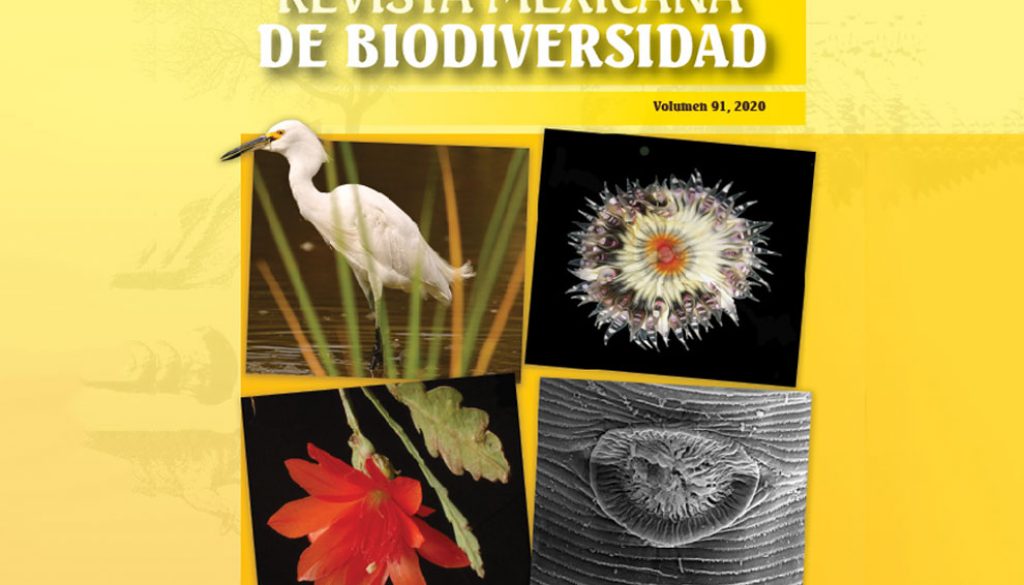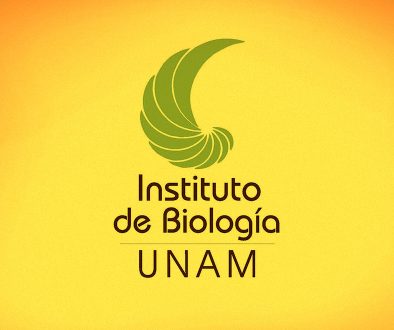Marcus Vinicius Brandão
Museu de Zoologia, Universidade de São Paulo, Av. Nazaré, 481, Ipiranga, 04263–000, São Paulo, SP, Brazil
*Corresponding author: brandao.mvo@gmail.com (M.V. Brandão)
Received: 13 May 2020; accepted: 30 June 2020
Brazil ranks as the most speciose country regarding marsupial diversity (Order Didelphimorphia), with the last checklist of mammals reporting a total of 55 species (Paglia et al., 2012). Since 2012 the known diversity increased greatly in the country, reaching a total of 62 species according to the new book “Marsupiais do Brasil: Guia de identificação com base em caracteres morfológicos externos e cranianos”, edited by Faria et al. (2019).
The increase of one species per year between both referred studies is noteworthy, moreover the book of Faria and colleagues actually encompasses a much higher number of taxonomic changes, including taxa that were either recently described (Monodelphis arlindoi, M. pinocchio, M. saci, M. touan, M. vossi, and Philander pebas), revalidated (Gracilinanus peruanus, Marmosa macrotarsus, M. waterhousei, M. budini, M. rutteri, Marmosops caucae, Metachirus myosuros, and P. quica), or represent the first published record for Brazil (M. handleyi). On the other hand, taxa were also excluded owing to either being considered junior synonyms (M. maraxina, M. rubida, M. sorex, M. umbristriata, M. theresa, P. frenatus), nomen dubium (M. impavidus), or absent in Brazil (M. regina —now restricted to the type locality in Colombia) —see further details in Burgin et al. (2018), Brandão et al. (2019), Voss et al. (2019), and references therein.
Faria and colleagues did not include the records of Cryptonanus unduaviensis, Marmosops pakaraimae and Monodelphis sanctarosae for Brazil (Silva et al., 2017; Brandão et al., 2019). This is probably due to a conservative criterion, which I consider to be a wise decision since these records still need further morphological and/or genetic evidence.
Not only the updated list justifies Faria and colleagues contribution, but also the associated data to each genus and species of didelphid marsupial. The book includes: 1) identification key for genera; 2) illustration of a generalized didelphid skull, with indications of its major structures; 3) data for each species, including: i) tables with external measurements, ii) pelage and skull qualitative characters, with high quality photos of live specimens, iii) reproductive characters of mammae and pouches, iv) habit and habitat preferences, and v) maps with updated geographic distribution in Brazil.
Published with the support of the Sociedade Brasileira de Mastozoologia, the stated goal of the book is to contribute to the training and qualification of human resources. The goal particularly draw my attention for two reasons: 1) taxonomy is facing a decline in the number of specialists and funding worldwide (Britz et al., 2020), which is particularly troublesome since our knowledge on didelphid diversity is far from stable —as attested by the many taxonomic changes herein mentioned, and 2) the number of zoological/botanical studies required to obtain environmental licenses for construction of hydroelectric dams, highways, railroads, electric transmission lines, among others, has grown considerably in Brazil in recent decades (Silveira et al., 2010). Despite the ecological impacts caused by these anthropic advances, these studies also generate an increase of specimens deposited in Brazilian zoological collections (Silva et al., 2015; Brandão et al., 2019). In several recently published accounts, data on marsupials come from these newly collected specimens (e.g., Semedo et al., 2015; Barbosa et al., 2016; Brandão et al., 2015, 2019). Nonetheless, there is a considerable disparity regarding the early identification of specimens in the field when compared to their true taxonomic identity, which should be based on the respective vouchers housed in scientific collections. For instance, there is only about half of specimens being correctly identified in the field in the case of collected specimens from the State of Mato Grosso (Brandão & Carmignotto, unpublished data). Faria and colleagues new book will certainly be helpful on these matters, either as a reference for students or as a field guide for professionals.
Although not specifically designed for that purpose, the compiled data contained in this new book shall also provide further help on conservation actions. In a 10 year interval, the number of threatened species of marsupials in Brazil is now 4 times higher, since only one species was previously considered threatened (Chiarello et al., 2008), in contrast to the 4 species considered in the last evaluation (ICMBio, 2018). Therefore, with the many taxonomic changes and associated data published in recent years, Faria and colleagues book is an important source of data for future assessments on the conservation status of the Brazilian marsupials, especially those recently recognized as valid and distinct taxa.
For all the reasons described herein, one could only reach the conclusion that the new “Marsupiais do Brasil” book represents a valuable synthesis of the current knowledge on exclude marsupials from Brazil, with regard to its identification, geographic distribution, reproductive data and habits. The book will be particularly useful for young mammalogists with an interest in taxonomy and ecology of didelphid marsupials, a diverse and still poorly known group with an urgent need for further field/collection efforts, as well as of future trained taxonomists. Finally, but not least, the size of the book is ideal to be used during field work for the study of marsupials.
References
Barbosa, J. L., Custódio, R. J., & Brandão, M. V. (2016). Rediscovery and range extension of the Black-shouldered Opossum Caluromysiops irrupta Sanborn, 1951 (Didelphimorphia, Didelphidae) in Brazil. Mammalia, 80, 325–328. https://doi.org/10.1515/mammalia-2014-0147
Brandão, M. V., Garbino, G. S. T., Godoy, L. P., Silva, L. A., & Pascoal, W. (2015). New records of Chironectes minimus (Zimmermann, 1870) (Didelphimorphia, Didelphidae) from central Brazil, with comments on its distribution pattern. Mammalia, 79, 363–368. https://doi.org/10.1515/mammalia-2014-0037
Brandão, M. V., Garbino, G. S. T., Semedo, T. B. F., Feijó, A., Nascimento, F. O., Fernandes´Ferreira, H. et al. (2019). Mammals of Mato Grosso, Brazil: annotated species list and historical review. Mastozoolia Neotropical, 26, 263–307. https://doi.org/10.31687/saremMN.19.26.2.0.03
Britz, R., Hundsdörfer, A., & Fritz, U. (2020). Funding, training, permits—the three big challenges of taxonomy. Megataxa, 1, 49–52. https://doi.org/10.11646/megataxa.1.1.10
Burgin, C. J., Colella, J. P., Kahn, P. L., & Upham, N. S. (2018). How many species of mammals are there? Journal of Mammalogy, 99, 1–11. https://doi.org/10.1093/jmammal/gyx147
Chiarello, A. G., Aguiar, L. M. S., Cerqueira, R., Melo, F. R., Rodrigues, F. H. G., & Silva, V. M. (2008). Mamíferos ameaçados de extinção no Brasil. In A. B. M. Machado, G. M. Drommond, & A. P. Paglia (Eds.), Livro Vermelho da Fauna Brasileira Ameaçada de Extinção (pp. 681–702). Belo Horizonte, Minas Gerais: Ministério do Meio Ambiente e Fundação Biodiversitas.
Faria, M. B., Lanes, R. O., & Bonvicino, C. R. (2019). Marsupiais do Brasil: guia de indentificação com base em caracteres morfológicos externos e cranianos. São Caetano do Sul (Brazil): Amélie Press.
ICMBio. (2018). Livro Vermelho da Fauna Brasileira Ameaçada de Extinção. Volume 2. Mamíferos. ICMBio, Brasília.
Paglia, A. P., Fonseca, G. A. B., Rylands, A. B., Herrmann, G., Aguiar, L. M. S., Chiarello, A. G. et al. (2012). Annotated checklist of Brazilian mammals. Occasional Papers in Conservation Biology, 6, 1–68.
Semedo, T. B. F., Brandão, M. V., Carmignotto, A. P., Nunes, M. S., Farias, I. P., Silva, M. N. F. et al. (2015). Taxonomic status and phylogenetic relationships of Marmosa agilis peruana Tate, 1931 (Didelphimorphia: Didelphidae), with comments on the morphological variation of Gracilinanus from central western Brazil. Zoological Journal of the Linnean Society, 173, 190–216. https://doi.org/10.1111/zoj.12203
Silva, C. E. F., Andrade, R. A., de Souza, E. M. S., Eler, E. S., Silva, M. N. F., & Feldberg, E. (2017). Comparative cytogenetics of some marsupial species (Didelphimorphia, Didelphidae) from the Amazon basin. Comparative Cytogenetics, 11, 703–725. https://doi.org/10.3897/CompCytogen.v11i4.13962
Silva, M. N. F., Dias, R. L., Silva, C. R., Marques-Aguiar, S. A., Tavares, V. C., Aguiar, G. F. S. et al. (2015). Biodiversidade brasileira de mamíferos amazônicos representada em coleções biológicas. In A. C. Mendes-Oliveira, & Miranda, C. L. (Eds.), Pequenos mamíferos não–voadores da Amazônia brasileira (pp. 51–94). Rio de Janeiro: Sociedade Brasileira de Mastozoologia.
Silveira, L. F., Beisiegel, B. M., Curcio, F. F., Valdujo, P. H., Dixo, M., Verdade, V. K. et al. (2010). Para que servem os inventários de fauna? Estudos Avançados, 68, 173–207.
Voss, R. S., Fleck, D. W., & Jansa, S. A. (2019). Mammalian diversity and matses ethnomammalogy in Amazonian Peru. Part 3: marsupials (Didelphimorphia). Bulletin of the American Museum of Natural History, 432, 1–87.


